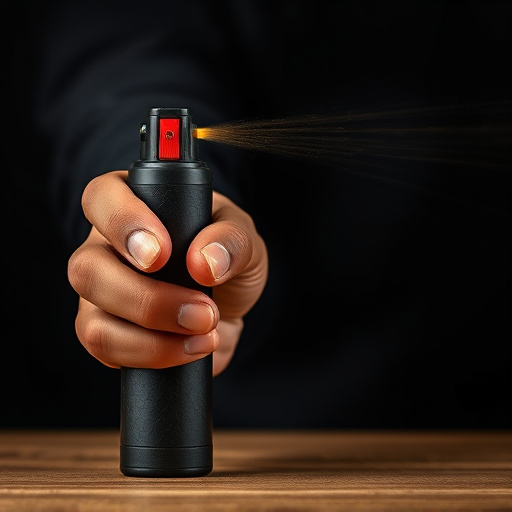Bear spray (pepper spray) is a powerful self-defense tool against bear attacks, using capsaicin to disrupt the bear's senses. After a close encounter, proper decontamination is vital. This includes opening windows for ventilation, inspecting and wiping down surfaces with damp cloths, brushing hard-to-reach areas, washing affected clothing, dishes, and adhering to local guidelines for disposal. Home decon steps also involve handwashing, storing contaminated clothes, and regularly cleaning high-touch surfaces to avoid accidental exposure. Prevent animal attacks through knowledge of wildlife habits, distance from sick/injured animals, and making noise during hikes.
Staying safe in the great outdoors involves knowing how to defend yourself against animal attacks. Bear spray, a powerful deterrent, offers a crucial layer of protection. This article guides you through essential knowledge about bear spray, its effectiveness, and practical steps for decontaminating pepper spray at home. Learn vital prevention strategies to minimize risks when encountering wildlife. Master these skills to ensure your outdoor adventures remain memorable for all the right reasons.
- Understanding Bear Spray and Its Effectiveness
- Pepper Spray Decontamination Steps at Home
- Additional Prevention Strategies for Animal Attacks
Understanding Bear Spray and Its Effectiveness
Bear spray, also known as pepper spray, is a popular self-defense tool for individuals encountering bears in their natural habitats. It’s a specialized aerosol designed to deter aggressive bear attacks by causing temporary blindness, coughing, and difficulty breathing. When used correctly, bear spray can significantly increase survival chances during unexpected encounters.
The effectiveness of bear spray lies in its active ingredient, capsaicin, which is derived from chili peppers. This irritant agent disrupts the bear’s sensory perception, allowing the user to create a safe distance from the animal. Proper application involves aiming for the bear’s face and eyes, ensuring a direct hit. However, understanding decontamination steps after exposure to pepper spray, like those followed for home decon of regular pepper spray, is crucial. This includes removing contaminated clothing, washing skin with soap and water, and using eye flush solutions to prevent long-term irritation or damage.
Pepper Spray Decontamination Steps at Home
After a close encounter with an aggressive animal, decontaminating your space with pepper spray is essential for removing any lingering residue and preventing future incidents. Start by opening all windows and doors to ensure proper ventilation. Next, carefully inspect all surfaces, including walls, floors, and furniture, for visible signs of spray. Use a damp cloth or sponge to wipe down these areas, gently removing any trace of the spray.
For hard-to-reach spots or delicate surfaces, a soft brush can be used to gently sweep away residual particles. Once decontamination is complete, launder all affected clothing and wash all dishes or utensils that may have come into contact with the spray. Make sure to follow local guidelines for disposing of the used pepper spray and contaminated materials to ensure safety and prevent further environmental impact.
Additional Prevention Strategies for Animal Attacks
In addition to carrying bear spray, there are several prevention strategies to consider for animal attacks. Knowledge is a powerful tool; learn about local wildlife habits and habitats to anticipate potential encounters. Keep your distance from animals, especially if they appear sick or injured, as they may be more aggressive due to vulnerability. When hiking or camping, make noise to signal your presence and avoid surprising animals around blind corners.
Implementing decontamination steps at home is crucial for pepper spray safety. After encountering an animal or even just handling gear used in potential encounters, wash hands thoroughly with soap and water. Remove clothing that may have come into contact with pepper spray and place it in a sealed bag for later cleaning or disposal. Ensure your living space is free from lingering spray by regularly cleaning high-touch surfaces and vacuuming floors to prevent accidental exposure.
Bear spray is an effective defense against animal attacks, but proper decontamination after use is crucial. Following simple pepper spray decontamination steps at home can help prevent secondary irritation and ensure safety. Additionally, combining these measures with other prevention strategies, such as making noise while hiking and securing food properly, will significantly reduce the risk of animal encounters and attacks.
